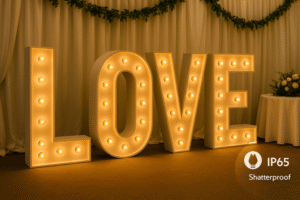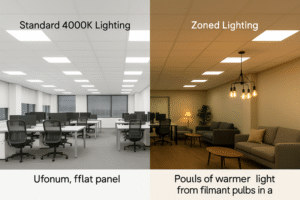That new LED bulb is already flickering or has stopped working entirely, which is frustrating. Before you rush to replace it, many common problems have simple fixes that save you time and money.
To troubleshoot a faulty LED bulb, first check the power source and ensure the bulb is screwed in tightly. For flickering, investigate dimmer switch compatibility. If an integrated fixture fails, the internal driver is the likely culprit and may require professional attention.
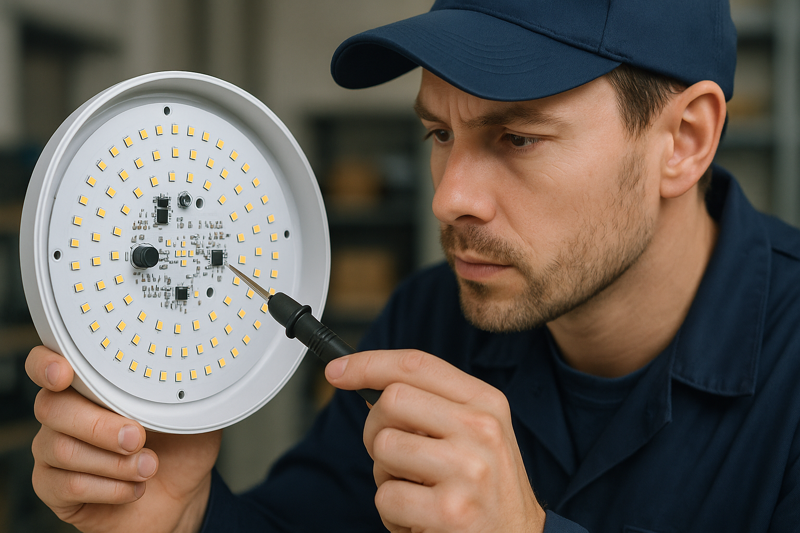
These seemingly complex issues often stem from simple causes. With 30 years of experience as a lighting manufacturer, I've seen every type of failure imaginable. Many times, my clients assume a quality issue with the bulb, when in reality, a small detail in the installation or environment was overlooked. Let me walk you through these common faults step-by-step, so you can become an expert at solving minor lighting issues and better serve your own customers.
Why Are My LED Lights Flickering?
Flickering lights are not just an annoyance; they can be a sign of an electrical incompatibility. Don't immediately blame the bulb, as the problem is often related to the dimmer switch.
The most common cause of flickering in LED lights is incompatibility with a dimmer switch. Older dimmers, designed for high-wattage incandescent bulbs, cannot properly regulate the low power of LEDs. Replace the switch with an LED-compatible dimmer to solve the issue.
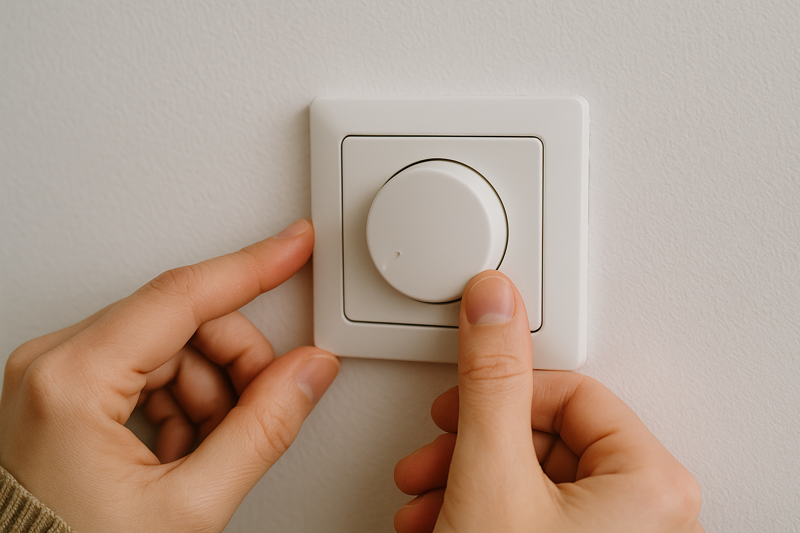
I once worked with a client from the Netherlands, Dané Bakker, who was experiencing this exact problem. He had sourced a large batch of our dimmable LED filament bulbs for a restaurant project, but his client complained about a constant, subtle flicker. The issue was the restaurant's old dimming system. It was designed for incandescent bulbs that used dozens of watts, while our LED bulbs used only 8 watts. When the old dimmer tried to control such a low-power device, the current became unstable, causing the flicker. We advised him to replace the old switches with modern LED-compatible dimmers (specifically, trailing-edge models), and the problem was solved immediately. This experience highlights how crucial component compatibility is.
Diagnosing the Root Cause of Flickering
Besides dimmer issues, a few other factors can cause flickering. As a product manager or buyer, understanding these will help you address customer concerns more professionally.
- Dimmer Mismatch1: This is the primary culprit. Incandescent bulbs dim by reducing voltage, but LEDs require a specialized driver chip to manage brightness. Old leading-edge dimmers don't communicate well with these drivers.
- Circuit Load Fluctuations2: Sometimes, large appliances like refrigerators or air conditioners are on the same circuit. When they turn on, they can cause a momentary voltage drop, making lights on the same circuit flicker briefly.
- Loose Connections: A bulb that isn't screwed in tightly or has a faulty contact point within the socket can cause an intermittent connection, which appears as flickering.
A Simple Troubleshooting Chart for Flickering
Follow this checklist to systematically diagnose the problem.
| Step | Action | Purpose |
|---|---|---|
| 1. Secure the Bulb | Turn off the power and screw the bulb in firmly. | To rule out a simple loose connection. |
| 2. Test Elsewhere | Move the flickering bulb to a standard, non-dimmable lamp socket. | To determine if the dimmer is the cause. If it stops flickering, the dimmer is the problem. |
| 3. Verify Dimmer Type | Check if your dimmer is specifically rated for use with LEDs. | To resolve the most common compatibility issue. |
| 4. Check the Circuit | Observe if flickering coincides with the startup of heavy appliances. | To identify unstable voltage on the circuit. If so, moving the lights to a different circuit is advisable. |
What Should I Do If an LED Bulb Won't Turn On at All?
You flip the switch, but the room stays dark. It's easy to assume the bulb is dead, but before you order a replacement, run through a few quick diagnostic checks.
If an LED bulb doesn't light up, first check the circuit breaker and wall switch. Next, test the bulb in a different, known-working lamp. If it still fails to light, the bulb itself or its internal driver has likely failed and needs to be replaced.
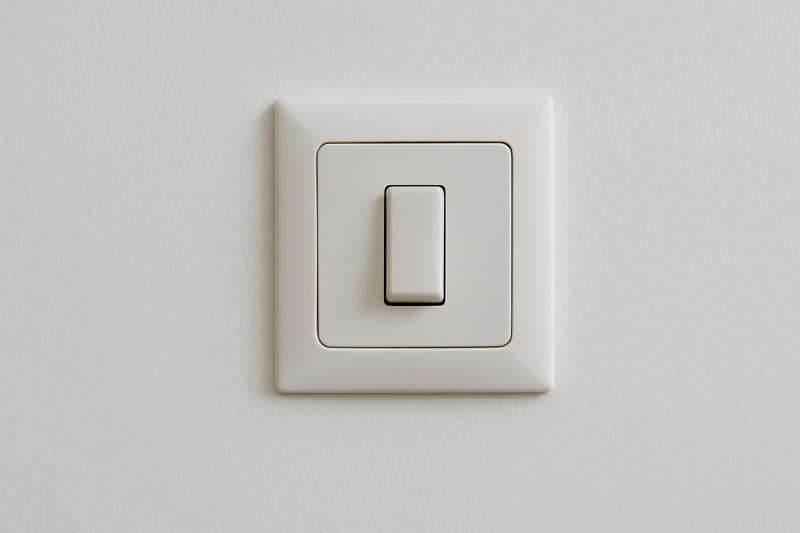
An LED bulb is far more complex than an incandescent one. It's a precise piece of electronics containing LED chips, a driver, heat sinks, and more. I've handled many "dead bulb" complaints where it turned out that more than half the bulbs were perfectly fine. The issue was a tripped breaker, a faulty wall switch, or, in one case with a Dutch client, a lamp holder that had rusted from moisture. A systematic check saves a lot of hassle and prevents misdiagnosis. Always start with the simplest external factors before concluding the bulb is faulty.
The Diagnostic Process for a Dead Bulb
When a bulb fails to light, follow these steps in order.
Step One: Check the Basics
- Circuit Breaker: Ensure the breaker for that circuit hasn't been tripped.
- Wall Switch: Make sure the switch is on. To be certain the switch itself isn't broken, try plugging another device into a nearby outlet on the same switch.
Step Two: Perform a Cross-Test
- Test in a Good Socket: Take the non-working bulb and install it in a lamp that you know is working correctly. This is the most definitive test. If the bulb lights up, the problem is with the original fixture or wiring, not the bulb.
- Test with a Good Bulb: Take a known-working bulb and install it in the original fixture. If the new bulb works, you've confirmed the original bulb has failed.
Why Do LEDs Fail?
If you confirm the bulb itself has failed, the cause is usually not that the LED chips "burned out." More often, the internal driver has failed. The driver is the electronic component that converts your home's AC power to the DC power the LEDs need. It is sensitive to heat and voltage fluctuations. The quality of the driver is the single most important factor in a long-lasting LED bulb.
| Common Failure Cause | Description |
|---|---|
| Driver Failure3 | This is the most common reason. Capacitors and other components on the driver board fail due to heat or power surges. |
| LED Chip Failure4 | This is rare and typically only happens due to extreme overheating or a major electrical surge that damages the chip substrate. |
| Internal Connection Break | Severe vibrations during shipping or installation can sometimes cause a soldered connection inside the bulb to break. |
At Hongyu Bulb, we place extreme importance on the quality of our drivers, knowing they are the heart of the product. Choosing a supplier who prioritizes driver quality is the best way to reduce failure rates from the start.
Why Did My LED Bulb Die So Quickly?
You bought an LED bulb rated for tens of thousands of hours, but it failed in a fraction of that time. Were you misled? The cause is likely not the bulb's quality but its environment.
Premature failure in LED bulbs is most often caused by overheating. Enclosed fixtures or fixtures surrounded by insulation trap heat, which rapidly degrades the electronic components. Ensure adequate ventilation or use bulbs specifically rated for enclosed fixtures.
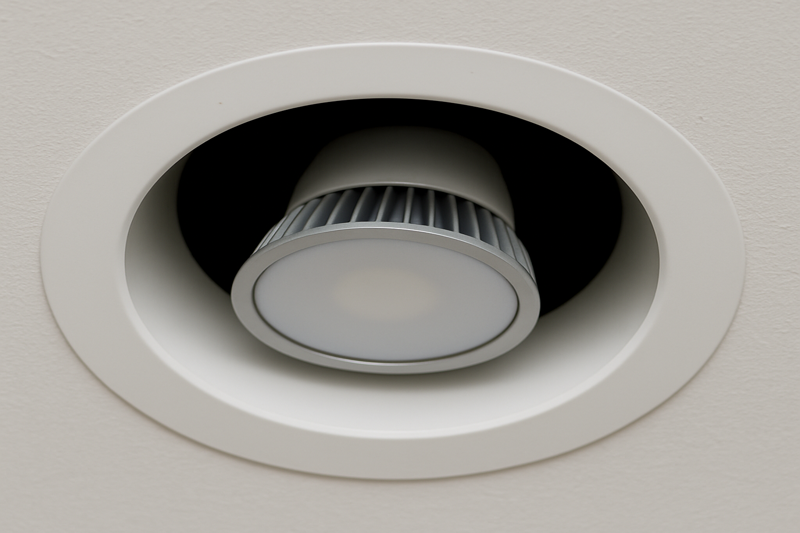
Heat is the number one enemy of LEDs, a critical point that many end-users and even some buyers overlook. The heat generated during operation must be dissipated effectively; otherwise, it will drastically shorten the life of the internal electronics. I once supplied bulbs for an attic renovation project in the UK, where the client installed standard LED bulbs directly inside ceiling insulation. A few months later, most of the lights had failed. This was a classic case of poor heat dissipation. The insulation trapped all the heat, essentially forcing the bulbs to operate in an oven. No matter how well-made, they couldn't survive. We replaced them with IC-Rated downlights designed for direct contact with insulation, and the problem was solved.
Key Factors That Shorten LED Lifespan
The advertised lifespan of an LED, such as 25,000 hours, is measured under ideal laboratory conditions. In real-world applications, the following factors can significantly reduce it.
- High Temperatures5: Do not use standard LED bulbs in fully enclosed fixtures unless the bulb is explicitly marked as "suitable for enclosed fixtures." Trapped heat will cause the driver to fail prematurely.
- Voltage Fluctuations6: Frequent or severe power surges can damage the sensitive electronics in the LED driver. This is more common in areas with unstable power grids.
- Moisture and Humidity: In environments like bathrooms, kitchens, or outdoors, moisture can seep into the bulb and cause short circuits or corrosion of metal components. Always choose bulbs with an appropriate IP rating (e.g., IP44 or higher) for damp locations.
- Frequent On/Off Cycling: While LEDs are much more resilient to frequent switching than fluorescent bulbs, extremely rapid cycling (e.g., multiple times per second) can still place extra stress on the driver and slightly reduce its overall lifespan.
How to Maximize the Lifespan of Your LED Bulbs
| Method | Recommendation |
|---|---|
| Ensure Good Ventilation | Use open or well-ventilated fixtures whenever possible. For recessed lights, ensure there is adequate clearance around the housing. |
| Select the Right Product | For bathrooms, outdoor areas, or other special environments, always choose a bulb with the correct IP rating for moisture protection. |
| Use Stable Power | In areas prone to power surges, consider using surge protectors to safeguard your lighting and other electronic devices. |
| Choose a Reliable Brand | High-quality LED bulbs are designed with better heat sinks and more robust drivers, making them more resilient to challenging conditions. |
How Do You Handle a Faulty Integrated LED Fixture?
Many modern light fixtures have the LED source built directly into the design, meaning you can't just change a bulb. Does a failure mean you have to throw out the entire expensive fixture?
With integrated LED fixtures, the fault is usually with the power supply (driver), not the LED chips themselves. If the driver is an external, separate component, it can be replaced. If it's built-in, a professional electrician should assess if a repair is feasible.
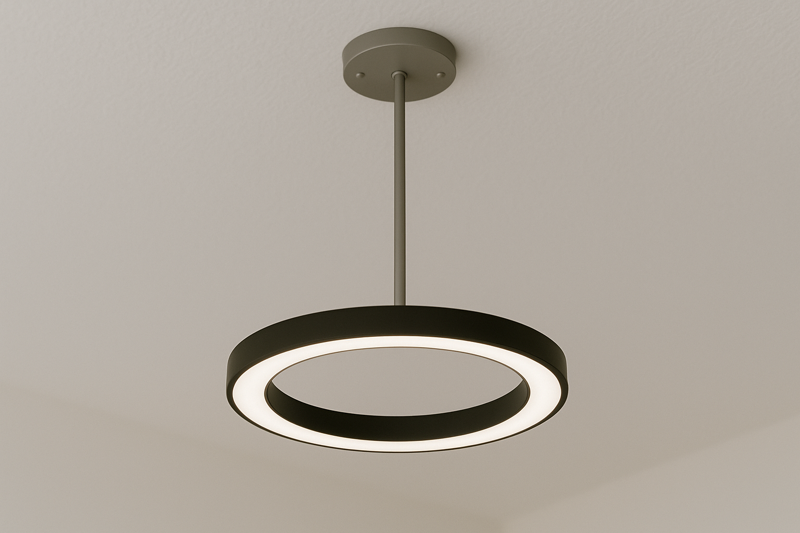
Integrated designs allow for more creative and minimalist fixtures, but they do complicate repairs. As a manufacturer, we understand this concern. That's why many of our integrated systems are designed with replaceable drivers. For instance, some linear lights and track lighting systems have an external driver module. If a failure occurs, the client only needs to replace this small component, which is far cheaper than replacing the entire light. However, for some fully sealed, waterproof fixtures, the driver is permanently encapsulated and cannot be serviced. This is why, as a buyer, asking about the serviceability of the driver in an integrated fixture is a key part of your technical evaluation.
Solutions for Integrated LED Failures
When faced with a failed integrated fixture, don't give up immediately. Your options depend on the design.
External Driver
- How to Identify: The driver is a separate box connected by wires between the fixture and the main power line. Common in pendant lights, under-cabinet lighting, and commercial systems.
- Solution: This is the best-case scenario. You can purchase a replacement driver with the same specifications (voltage, amperage) from the manufacturer and swap it out. Always disconnect the power before doing so.
Internal but Replaceable Driver
- How to Identify: The fixture can be disassembled, and the driver is a distinct module inside connected with terminals.
- Solution: This requires some technical skill. After turning off the power, you must carefully open the fixture housing, identify the driver, note its model number and specs, and source a replacement. If you are not comfortable with wiring, it is highly recommended to hire an electrician.
Fully Integrated Driver
- How to Identify: The driver components are soldered onto the same circuit board as the LEDs or are sealed completely within the fixture body, making them inaccessible.
- Solution: In this case, a repair is generally not practical or safe. The best course of action is to contact the supplier to see if the fixture is under warranty. If not, replacing the entire fixture is the only reliable option.
At Hongyu Bulb, we recognize the importance of reliability. Our integrated fixtures are engineered using high-quality, long-life LED chips and drivers to minimize the possibility of failure from the very beginning, providing our B2B partners with products they can trust.
Conclusion
By mastering these basic troubleshooting steps, you can diagnose most common LED failures. Partnering with a reliable supplier like us, who prioritizes driver quality and robust design, prevents these problems from happening in the first place.
Understanding dimmer mismatch is crucial for effective lighting solutions, ensuring compatibility and preventing flickering. ↩
Exploring circuit load fluctuations helps in diagnosing flickering issues, leading to better electrical management and customer satisfaction. ↩
Understanding driver failure can help you choose better quality bulbs and avoid frequent replacements. ↩
Exploring LED chip failure can provide insights into the durability and reliability of LED lighting solutions. ↩
Understanding how high temperatures affect LED lifespan can help you choose the right bulbs and fixtures. ↩
Exploring the impact of voltage fluctuations can guide you in protecting your LED investments and ensuring longevity. ↩






